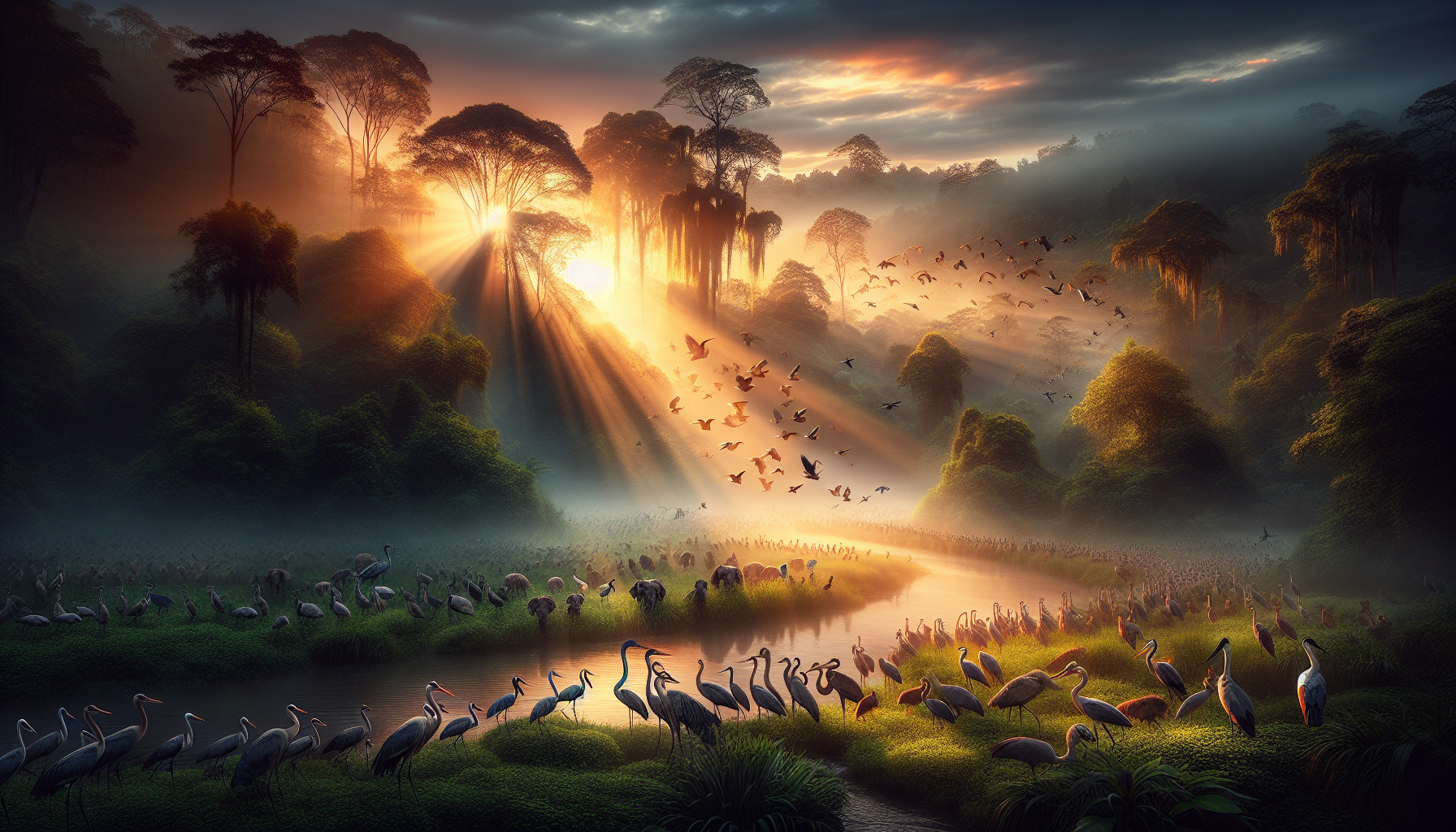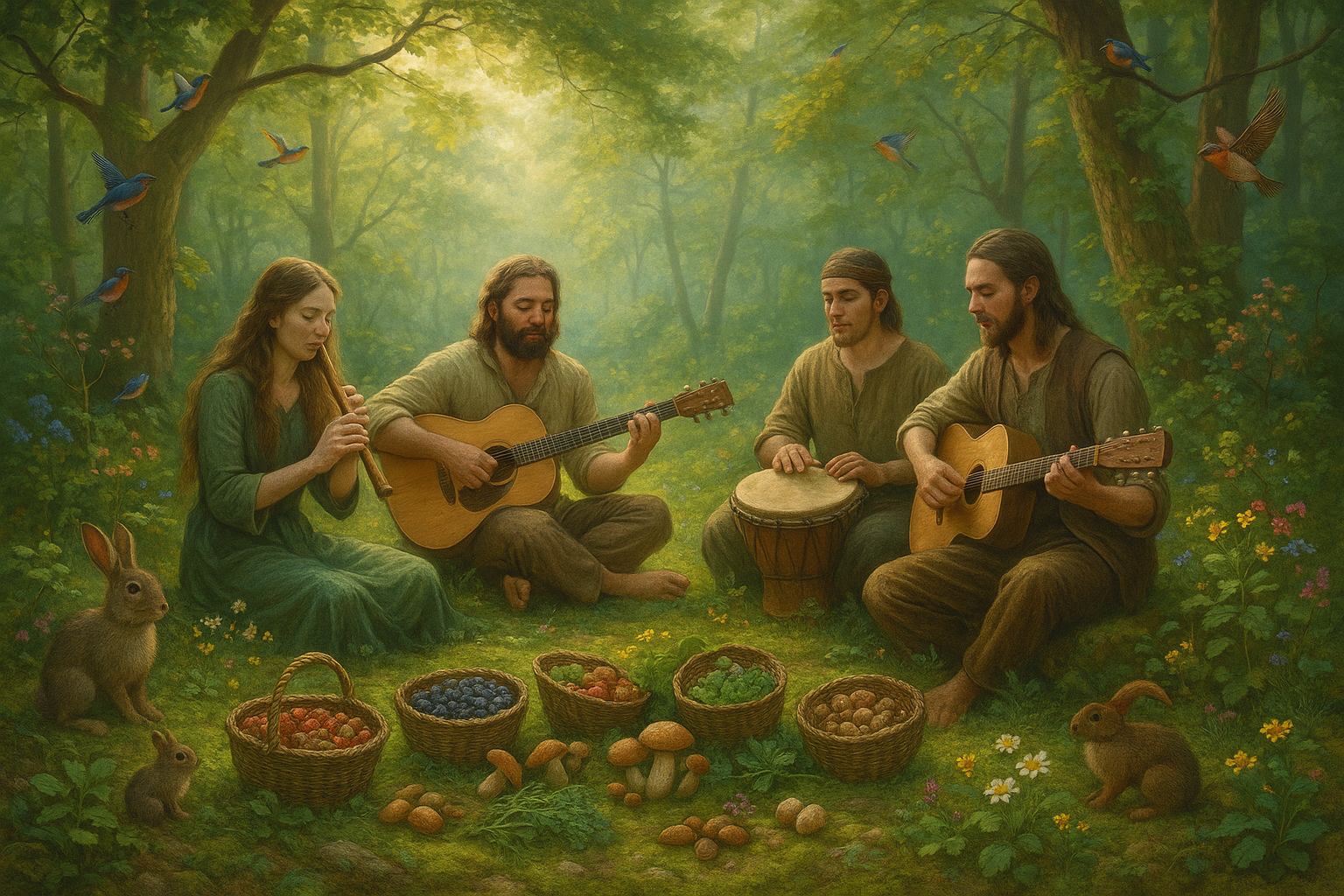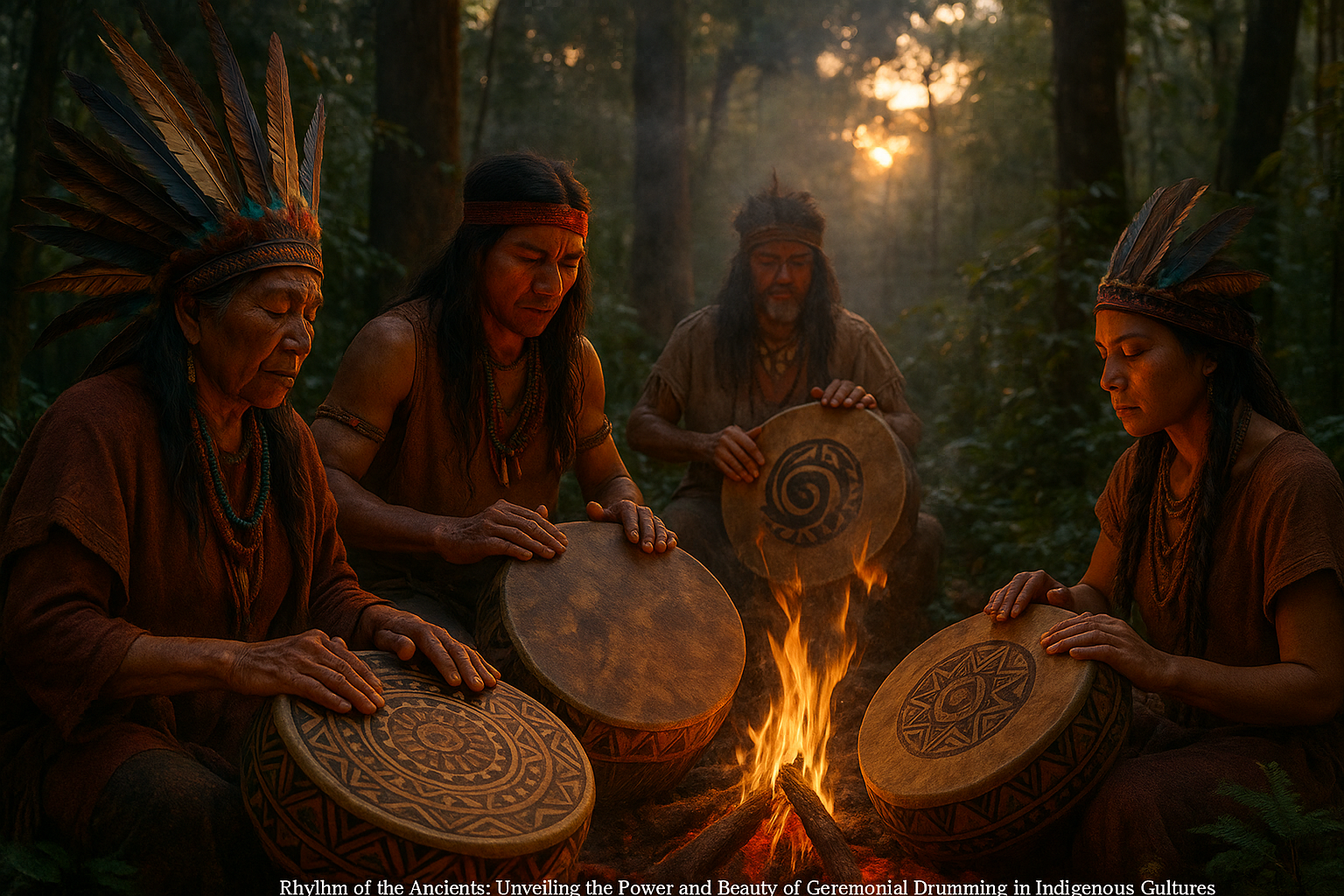In the stillness of dawn, as the first rays of sunlight gently kiss the earth, an enchanting symphony begins to unfold—one that is as ancient as the world itself. This is the biophony, the collective sound of the natural world, and it tells stories of survival, adaptation, and the incredible journeys undertaken by wildlife across the globe. From the rhythmic chants of migrating birds to the haunting calls of marine mammals, these sounds offer us a glimpse into the lives of creatures whose paths are guided by instinct and necessity. But what can these sounds teach us about the migration stories of wildlife? How do they reflect the challenges and triumphs faced by these intrepid travelers? 🌍
Welcome to “Journey of Sounds: Exploring the Biophony in the Migration Stories of Wildlife,” where we delve into the fascinating world of animal migration through the lens of sound. Migration is a phenomenon that has captivated human curiosity for centuries. It is a testament to the resilience and adaptability of life on Earth, as countless species traverse vast distances in search of food, breeding grounds, and better climates. But beyond the physical movement, there lies an auditory dimension—a rich tapestry of sounds that accompanies and narrates these epic voyages. In this article, we will embark on an exploration of these sounds, seeking to understand the deeper meanings they convey and the roles they play in the survival of species.
Our journey begins with the skies, where the chorus of birds in flight paints an aural masterpiece. The sound of flocks of geese honking overhead, the melodic warbles of songbirds, and the synchronized flapping of wings create a dynamic soundscape that is both mesmerizing and vital for navigation and communication. We will examine how these sounds are not mere background noise but are integral to the migratory process, aiding in orientation and cohesion among traveling groups. Through the stories of various bird species, we will discover how changes in climate and habitat are altering these ancient songs and, consequently, the migration patterns themselves.
From the skies, we dive into the depths of the oceans, where the biophony takes on a different character. The ocean is a vast and mysterious realm, and the migration stories of its inhabitants are no less remarkable. Whales, dolphins, and other marine creatures use sound not only to communicate but to navigate the dark, expansive waters. We will explore the intricacies of whale songs and dolphin clicks, unraveling how these sounds form a critical part of their migratory journeys. Furthermore, we will discuss the impact of human activities, such as shipping and noise pollution, on these natural soundscapes and the subsequent effects on marine migration.
Finally, we turn our attention to the land, where a diverse array of mammals, insects, and amphibians engage in their own migratory adventures. From the thundering hooves of wildebeests on the African plains to the subtle rustling of butterflies in a Mexican forest, each sound is a note in the grand symphony of life. We will investigate how these terrestrial migrations are orchestrated and the environmental cues that trigger such movements. Additionally, we will consider the role of sound in predator-prey interactions during migration, highlighting the delicate balance of nature.
As we journey through these soundscapes, it becomes evident that the biophony is not just a collection of random noises but a profound expression of life’s interconnectedness. By tuning into these sounds, we gain insight into the complexities of migration and the challenges that wildlife face in an ever-changing world. Through this exploration, we hope to foster a deeper appreciation for the natural symphonies that surround us and inspire action to preserve these vital soundscapes for future generations. 🎵
The Symphony of Nature: Understanding Biophony
Biophony, a term coined to describe the collective sound that vocalizing animals create in a given environment, is an essential aspect of the natural world. From the rhythmic croaking of frogs to the harmonious singing of birds, biophony forms a crucial part of the acoustic environment. It is not just a random assortment of sounds but a structured and organized symphony that varies with time and geography.
The study of biophony allows us to delve into the intricate relationships between species and their habitats. Each species contributes uniquely to this symphony, filling a niche in the soundscape that plays a vital role in communication, mating, and territorial claims. The interactions of these sounds can inform scientists about the health of ecosystems and biodiversity. Biophony is influenced by various factors, including seasonality, human activity, and climate change, which can alter migration patterns and habitat use among wildlife.
To understand biophony better, researchers employ advanced technologies like bioacoustics, which involves recording and analyzing sounds produced by organisms. These recordings can be used to monitor species presence, behavior, and even to identify individual animals. The information gathered through these methods provides insights into how animals communicate and adapt to their environments. It also highlights the importance of preserving natural soundscapes, which are often disrupted by anthropogenic noise pollution.
Migration Patterns and Their Sonic Impact
Migration is a fundamental behavior observed in numerous species, from birds and mammals to fish and insects. This cyclical movement is often driven by the need to find food, breed, or escape harsh climates. The sounds associated with migration are as diverse as the species themselves, creating a dynamic and ever-changing biophony. As animals traverse vast distances, their vocalizations serve multiple purposes, including navigation and maintaining group cohesion.
The sonic impact of migration can be particularly profound during peak periods. For instance, the seasonal migration of birds results in a marked change in the soundscape as species pass through different geographical areas. These sound changes can be documented and analyzed to track migration routes and timings. Similarly, the sounds of marine life, such as whale songs, can vary seasonally, offering clues about migratory paths and breeding grounds.
Technological advancements have made it possible to study these migration sounds in detail. Satellite tracking combined with acoustic monitoring allows scientists to map migratory routes and analyze the accompanying biophony. This research has important implications for conservation, as it helps identify critical habitats and corridors that need protection. Furthermore, understanding migration-related biophony can assist in mitigating the impact of human-induced noise pollution, which can interfere with animal communication and navigation.
Comparative Analysis of Biophonic Elements
To appreciate the complexity of biophony, it is helpful to compare the soundscapes of different ecosystems. Each habitat, whether terrestrial or aquatic, supports a unique community of vocalizing species, resulting in distinctive acoustic signatures. This diversity can be categorized and studied to understand ecological dynamics and evolutionary adaptations.
Consider the following table comparing the biophonic elements of three distinct ecosystems:
| Ecosystem | Key Species | Dominant Sounds |
|---|---|---|
| Amazon Rainforest | Birds, frogs, insects | Bird calls, insect buzzing, frog croaks |
| Coral Reefs | Fish, cetaceans, crustaceans | Fish choruses, whale songs, snapping shrimp |
| Grasslands | Mammals, birds, insects | Mammal calls, bird songs, insect sounds |
These ecosystems exemplify how biophony reflects the biodiversity and ecological interactions present within each environment. The differences in biophonic patterns are not only a result of species composition but also the physical characteristics of the habitats, such as vegetation density and water presence.
For an engaging illustration of biophony in action, watch this insightful video on YouTube: “The Sounds of the Wild: A Journey into Biophony” by Nature Explorers. Discover how these diverse soundscapes play a crucial role in maintaining ecological balance and supporting life on Earth.

Conclusion
In wrapping up our exploration of the intricate tapestry of sound woven through the migration stories of wildlife, we find ourselves standing at the intersection of science, nature, and profound storytelling. This journey into the realm of biophony has illuminated the myriad ways in which soundscapes serve as both navigational tools and rich narratives of survival and adaptation. As we’ve navigated through this sound-infused odyssey, several key themes have emerged, each contributing to a deeper understanding of the natural world and our place within it.
The primary focus of this article has been the biophony—the collection of sounds produced by organisms in a particular habitat—and its pivotal role in the migratory patterns of wildlife. From the rhythmic songs of humpback whales echoing across the vast oceans to the intricate calls of migratory birds guiding them across continents, sound acts as an indispensable guide in the animal kingdom. The concept of biophony extends beyond mere communication; it encapsulates an entire ecological narrative that chronicles the challenges and triumphs faced by migrating species.
Throughout our discussion, we have examined how advancements in acoustic technology have revolutionized our understanding of these natural symphonies. Scientists and researchers are now able to capture and analyze soundscapes with unprecedented clarity, revealing hidden layers of ecological interactions. This technological evolution not only enhances our appreciation of wildlife but also underscores the urgency of preserving these soundscapes in the face of environmental degradation. As natural habitats succumb to human encroachment and climate change, the biophony of these regions serves as a poignant reminder of what stands to be lost.
Moreover, the cultural and symbolic significance of biophony cannot be overstated. Indigenous communities worldwide have long recognized the power of natural sounds in their cultural narratives and traditions. For them, the calls of migratory animals are not just background noise but integral threads in the fabric of their identity and spiritual heritage. The symbiotic relationship between these communities and the wildlife they share their lands with highlights the broader ethical implications of conservation efforts.
By exploring case studies, we have seen how specific species rely on sound to navigate their migratory journeys. For example, the monarch butterfly’s reliance on environmental cues, including biophonic signals, demonstrates the delicate balance required for successful migration. Similarly, the Arctic tern’s epic voyage from pole to pole showcases the remarkable endurance and precision honed by millennia of evolution. These stories are not just tales of animal behavior but resonate as universal narratives of perseverance and resilience.
Understanding biophony also has practical implications for conservation strategies. By mapping and monitoring soundscapes, conservationists can identify critical habitats and track changes in biodiversity. This acoustic data provides valuable insights that inform policy decisions and habitat management practices, ensuring that these natural orchestras continue to play for generations to come.
In conclusion, the journey of sounds in wildlife migration is a testament to the complexity and beauty of the natural world. It invites us to listen more closely, to appreciate the subtle symphonies that surround us, and to recognize our responsibility in preserving these vital soundscapes. As we reflect on the profound insights gained from this exploration, it is imperative to acknowledge our role in shaping the future of these narratives. Whether you are a researcher, a conservationist, or simply a nature enthusiast, there is a place for you in this ongoing story.
We encourage you to share this article with others who might be inspired by the wonders of biophony. Engage in conversations, participate in local conservation efforts, or simply take a moment to listen to the natural world around you. Every action, no matter how small, contributes to the preservation of these remarkable migratory stories.
🔗 For further exploration, you can visit active resources such as the Cornell Lab of Ornithology for in-depth studies on bird migration and sound, or the NOAA Ocean Acoustics Program for insights into marine biophony.
Let this be a call to action, a reminder that the symphony of life is continuous and ever-evolving. Together, we can ensure that the journey of sounds continues to inspire and enlighten future generations. 🌍✨
Toni Santos is a sensory storyteller and soundscape artisan whose work explores the forgotten language of the Earth through acoustic ecology storytelling. With a deep reverence for the natural world’s sonic textures, Toni crafts narratives that awaken our ears to the subtle music of forests, winds, waters, and wild silence.
His creative journey is rooted in a desire to preserve and interpret the acoustic heritage of environments, both ancient and fragile. From the echo of birdsong in a disappearing jungle to the resonance of stones in sacred landscapes, Toni’s stories reflect the memory held in sound—often overlooked, yet deeply felt.
With a background in environmental aesthetics and sonic design, Toni blends field recordings, visual symbolism, and poetic insight to create immersive experiences that honor the sonic soul of nature. His work does more than document; it invites listeners to re-tune themselves to the rhythms of life that still pulse beneath modern noise.
As the voice behind Vizovex, Toni shares sound-based studies, ambient narratives, and reflective content that help others reconnect with how sound shapes memory, meaning, and place.
His work is a tribute to:
The lost soundscapes of vanishing ecosystems
The role of natural acoustics in cultural and emotional memory
The healing potential of listening deeply to the world
Whether you’re an artist, an ecologist, or someone drawn to the quiet power of listening, Toni invites you into a space where every rustle, ripple, and resonance becomes a story—one note, one place, one heartbeat at a time.





